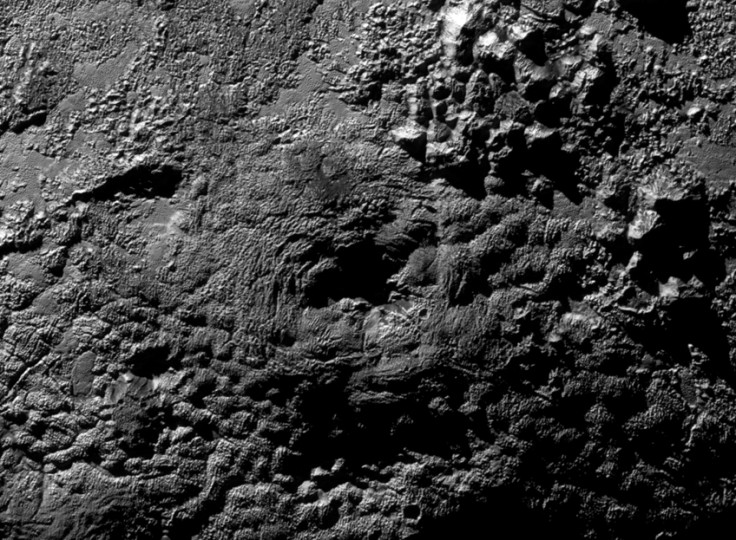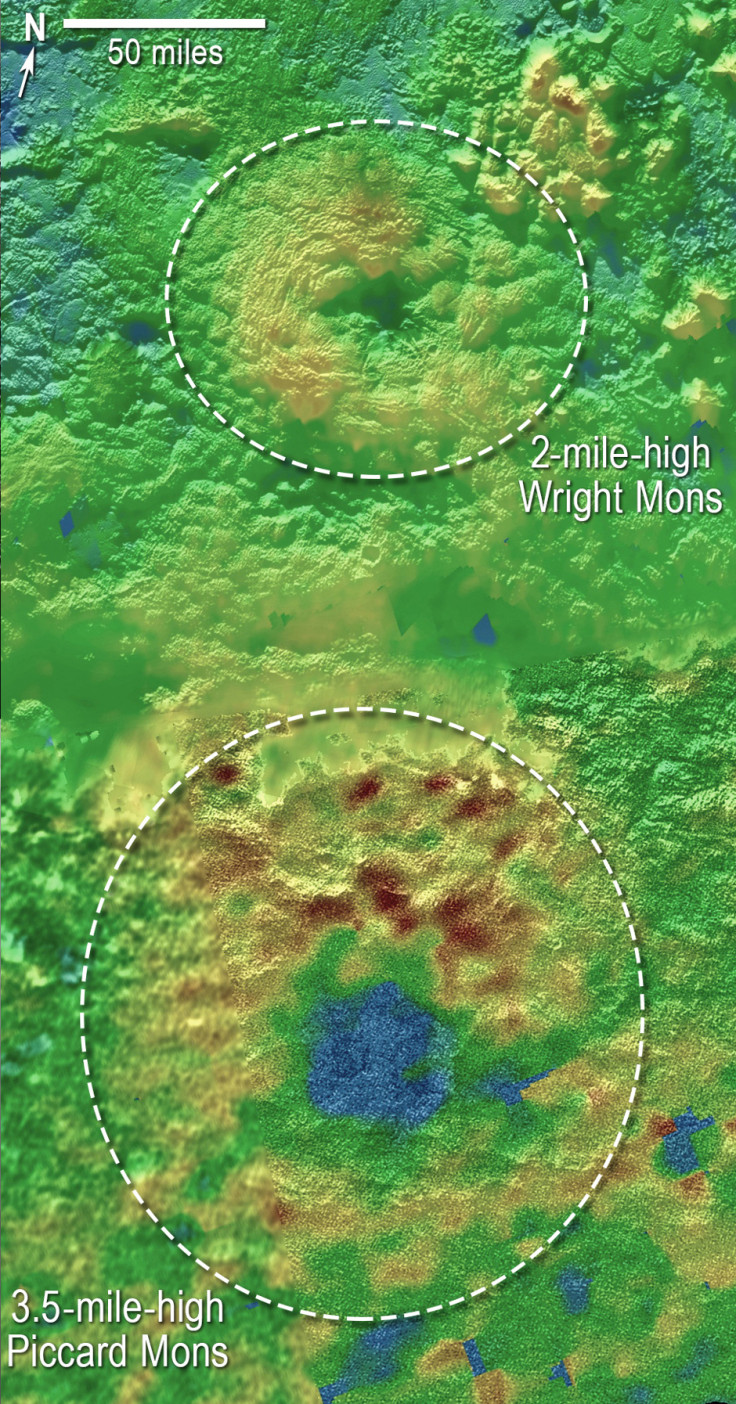Pluto: Most distant planet may have huge living ice volcanoes

Astronomers examining the latest batch of images beamed back from Pluto by the New Horizons probe have found what they believe are two enormous volcanoes, each several kilometres high, just south of Sputnik Planum near the equator. The two mountains, each of which appear to have a hole in the summit, are called Wright Mons (4 km high) and Piccard Mons (6 km high). Each mountain is tens of kilometres across.

Scientists believe that if the two peaks are volcanoes, and active, it is possible when they erupt ammonia, methane, nitrogen or icy water would be projected. Both peaks appear to have traces of what might be a form of old lava from past eruptions down their sides. However if the volcanoes are spewing ice, it is possible that liquid water may lie inside.
The images are in the latest batch of photographs to be sent back from New Horizons, which passed within 12,500 km of the mysterious mini-planet in July 2015, taking thousands of images. Due to the 5 billion km between earth and the probe, it will take many months before all the data can be retrieved.
The possibility of cryo-volcanic activity is just one of some 50 potentially significant discoveries which are being outlined at the 47th annual meeting of the American Astronomical Society's Division for Planetary Sciences taking place in Washington this week.
No firm evidence of cryo-volcanic activity has been confirmed in the outer planets of the solar system. However Nasa's Dr Oliver White stressed that it is too early to confirm if the mountains are in fact volcanic and that further testing of the local terrain should be done first.
Mission Principal Investigator Alan Stern said: "As the discoveries pour in from those data, Pluto is becoming a star of the solar system. I'd wager that for most planetary scientists, any one or two of our latest major findings on one world would be considered astounding. To have them all is simply incredible."
© Copyright IBTimes 2025. All rights reserved.






















